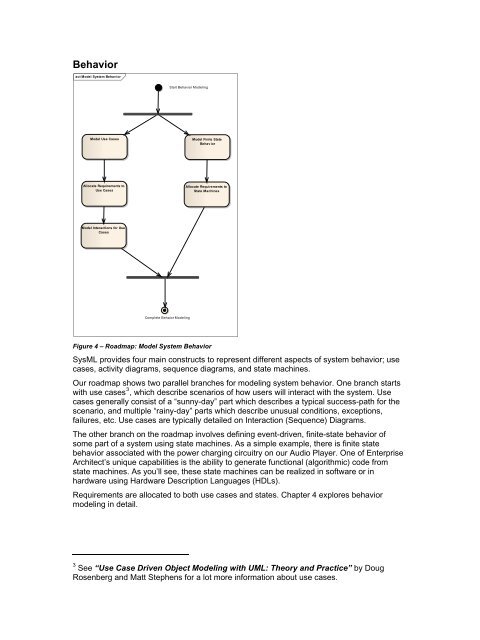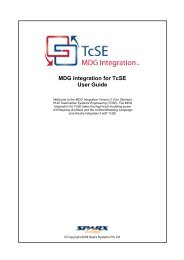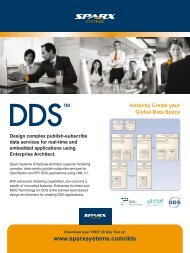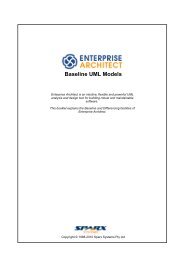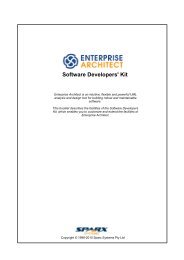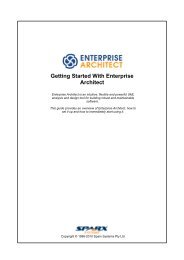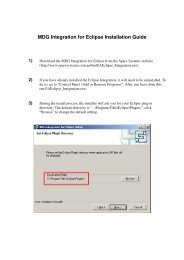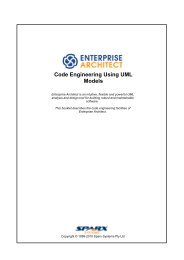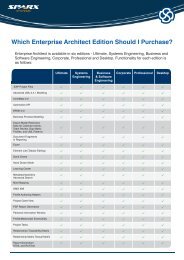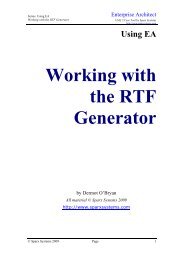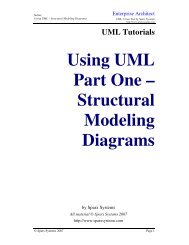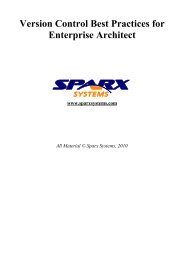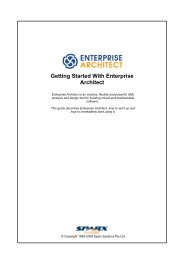Embedded Systems Development using SysML - Enterprise Architect
Embedded Systems Development using SysML - Enterprise Architect
Embedded Systems Development using SysML - Enterprise Architect
Create successful ePaper yourself
Turn your PDF publications into a flip-book with our unique Google optimized e-Paper software.
Behavior<br />
act Model System Behavior<br />
Start Behavior Modeling<br />
Model Use Cases<br />
Model Finite State<br />
Behav ior<br />
Allocate Requirements to<br />
Use Cases<br />
Allocate Requirements to<br />
State Machines<br />
Model Interactions for Use<br />
Cases<br />
Complete Behaior Modeling<br />
Figure 4 – Roadmap: Model System Behavior<br />
<strong>SysML</strong> provides four main constructs to represent different aspects of system behavior; use<br />
cases, activity diagrams, sequence diagrams, and state machines.<br />
Our roadmap shows two parallel branches for modeling system behavior. One branch starts<br />
with use cases 3 , which describe scenarios of how users will interact with the system. Use<br />
cases generally consist of a “sunny-day” part which describes a typical success-path for the<br />
scenario, and multiple “rainy-day” parts which describe unusual conditions, exceptions,<br />
failures, etc. Use cases are typically detailed on Interaction (Sequence) Diagrams.<br />
The other branch on the roadmap involves defining event-driven, finite-state behavior of<br />
some part of a system <strong>using</strong> state machines. As a simple example, there is finite state<br />
behavior associated with the power charging circuitry on our Audio Player. One of <strong>Enterprise</strong><br />
<strong>Architect</strong>’s unique capabilities is the ability to generate functional (algorithmic) code from<br />
state machines. As you’ll see, these state machines can be realized in software or in<br />
hardware <strong>using</strong> Hardware Description Languages (HDLs).<br />
Requirements are allocated to both use cases and states. Chapter 4 explores behavior<br />
modeling in detail.<br />
3 See “Use Case Driven Object Modeling with UML: Theory and Practice” by Doug<br />
Rosenberg and Matt Stephens for a lot more information about use cases.


